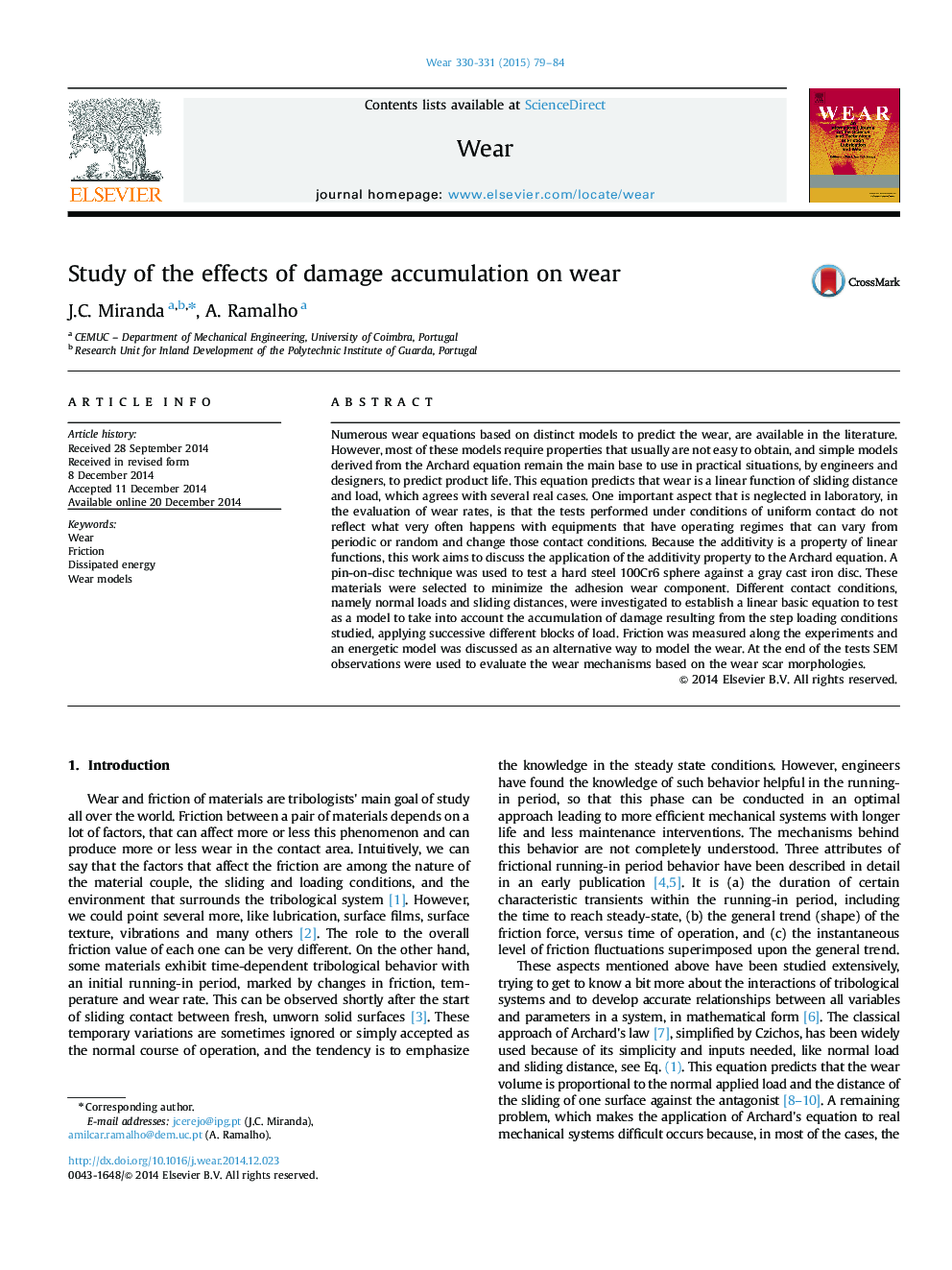| Article ID | Journal | Published Year | Pages | File Type |
|---|---|---|---|---|
| 7004282 | Wear | 2015 | 6 Pages |
Abstract
Numerous wear equations based on distinct models to predict the wear, are available in the literature. However, most of these models require properties that usually are not easy to obtain, and simple models derived from the Archard equation remain the main base to use in practical situations, by engineers and designers, to predict product life. This equation predicts that wear is a linear function of sliding distance and load, which agrees with several real cases. One important aspect that is neglected in laboratory, in the evaluation of wear rates, is that the tests performed under conditions of uniform contact do not reflect what very often happens with equipments that have operating regimes that can vary from periodic or random and change those contact conditions. Because the additivity is a property of linear functions, this work aims to discuss the application of the additivity property to the Archard equation. A pin-on-disc technique was used to test a hard steel 100Cr6 sphere against a gray cast iron disc. These materials were selected to minimize the adhesion wear component. Different contact conditions, namely normal loads and sliding distances, were investigated to establish a linear basic equation to test as a model to take into account the accumulation of damage resulting from the step loading conditions studied, applying successive different blocks of load. Friction was measured along the experiments and an energetic model was discussed as an alternative way to model the wear. At the end of the tests SEM observations were used to evaluate the wear mechanisms based on the wear scar morphologies.
Related Topics
Physical Sciences and Engineering
Chemical Engineering
Colloid and Surface Chemistry
Authors
J.C. Miranda, A. Ramalho,
